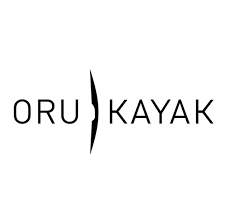Sorting
From A to Z
Deployments found: 8
SHoP Architects uses Autodesk BIM solutions to design a hub for innovation in Africa.
LOCATION
New York, NY
SOFTWARE
Autodesk® Building Design Suite Ultimate
Autodesk® Revit® Architecture
Autodesk® Revit® Structure
Autodesk® 3ds Max® Design
Autodesk® Ecotect® Analysis
Project Summary
New York-based SHoP Architects has made a name for itself—and its designs—since its founding in 1996. Winner of numerous awards, including the 2009 National Design Award for Architecture from the National Design Museum, the firm seeks to design buildings that are exciting, evocative, and highly functional. A longtime user of Building Information Modeling (BIM), SHoP explores its ideas in 3D with the BIM solutions in the Autodesk®
Building Design Suite Ultimate edition.
The Botswana Innovation Hub provides an excellent example of both SHoP’s approach to design and the use of BIM to further innovative projects. Located in Gabarone, Botswana, the Botswana Innovation Hub will serve as a 350,000-square-foot office and research center. “The Hub is part of the government of Botswana’s effort to support that nation’s increasingly diverse economy,” says William Sharples, a principal with SHoP. “The building is designed to attract the attention of potential tenants and provide the things innovators need from office and research spaces. Using Autodesk BIM solutions, we were able to explore ideas in the form of 3D models with the client and engineers. BIM helped us use the power of visualization to bridge time and distance.”
The Challenge
A landlocked country in southern Africa, Botswana gained its independence in 1966. Over the country’s short history, it has gone from being one of the poorest countries in the world to one of the most prosperous countries in sub-Saharan Africa, with diamond and other mineral mining helping to drive the economy. Not wanting to rely solely on those industries for growth, Botswana is encouraging entrepreneurship in other sectors such as technology, green industry, and pharmaceutical research.
To help support the country’s growth goals, the Botswana Innovation Hub will offer the most upto-date facilities for research and technology work. Because Botswana’s leaders felt the Hub needed an exceptional design to help attract attention and symbolize the country’s commitment to innovation, they decided to hold an international contest to choose the project architect competitively.
“This is a significant investment for the people of Botswana,” says David Tsheboeng, executive director of property development for the Botswana Innovation Hub. “Our leaders wanted to see the best ideas from the world’s architects, but we were not just looking for a striking design. The selection criteria also included sustainability and the use of the latest architectural tools.”
The Solution
The contest entry from SHoP stood out for a number of reasons. Designed to blend in with its surroundings, the building model’s organic forms evoked dune and delta landscapes, which are culturally and environmentally important in Botswana. SHoP’s entry also included a number of sustainability options—such as a living roof and shaded courtyards—that harmonized well with the overall goals of the building. SHoP created 3D renderings of its design concepts to help communicate their design ideas using Autodesk® 3ds Max® Design software, which is part of the Autodesk® Building Design Suite Ultimate. Kevin Fennell, project manager for SHoP, explains, “It’s quite typical to include 3D renderings in proposals, of course. But 3ds Max Design made it easier to incorporate details of the surrounding areas into ours. Being able to visualize the design helped the client to see how lightly the design touched the ground and how organically it engages with the landscape.”
“We were honored that Botswana’s leaders chose us to design the Botswana Innovation Hub,” says Sharples. “We relied on BIM and the software in the Building Design Suite to help us model our ideas. Autodesk® Revit® software was our primary design tool. It helped us explore ideas and engage with the design team—and the architectural community in Botswana—in ways that advanced the vision of the project.”
Sharing the Benefits of BIM
Early in the project, SHoP hosted a meeting with client representatives in New York, and showed them some Revit models with various options.
By reviewing the model in 3D, the client was able to see the intent of the design more clearly and provide feedback more quickly. The clients were able to better visualize not just how the building would look, but also how the design team from SHoP envisioned many of the materials coming together.
“Our clients were clear from the beginning that they wanted us to use the latest design tools, but they did not have much firsthand experience with BIM,” says Fennell. “After seeing what BIM can do, our clients suggested we introduce BIM to architects in Botswana. When it came time to select a local architect to help with the detailed design, we got them started with BIM with Revit.
We also demonstrated our BIM-based workflow at a meeting of Botswana’s architects’ association.” Fast Changes—More Insight Several team members from SHoP went to Africa to meet with the local structural engineer, who was using Autodesk® Revit® Structure software, on the project. During the meeting, the structural engineers suggested some spacing changes in the parking structure that they believed could reduce the amount of structural steel required.
“Looking at the structural model, we saw that their changes would work, and at the end of the day in Africa, we asked our New York office to apply the changes to our Revit model,” reports Steven Garcia, Revit model manager for SHoP.
“You can modify a model-based design very quickly. The changes were ready when we met with the client the next morning. We even knew that the changes could reduce the structural cost by as much as 5 percent.”
Designing for Sustainability
The midday sun in Botswana is brutal, and shade provides a welcome respite—even for buildings. SHoP designed the Botswana Innovation Hub with ample overhangs to help shade the building’s many windows. While designing in Autodesk Revit, the team was able to conduct preliminary shading studies as they designed. They then used Autodesk® Ecotect® Analysis software to perform additional analyses, exploring how the shading and building mass affected thermal load. “Shading is one of the most important sustainability features a building can have,” says Fennell. “Being able to design for sustainability before bringing in a sustainability consultant saves tremendous time. We understood more clearly how the overhangs would perform early in the process. Now, we are using Revit to help us understand the best materials to use for the panels.”
The Result
As the Botswana Innovation Hub project advances towards the construction phase, Sharples reflects on the role BIM played on the project—and will continue to play. He says, “SHoP has always embraced 3D design, and BIM takes 3D to the next level. On the Hub, BIM is helping everyone on the project understand the design and contribute more easily.”
The clients in Botswana also recognize the contribution made by Autodesk BIM solutions. “We appreciate the visualizations SHoP is providing on the project,” says Tsheboeng. “Being able to share 3D models of the building with leaders in Botswana has helped keep enthusiasm high for the project. However, the value is not just about seeing what the building may look like. We are impressed by how much intelligence about the project SHoP can glean from the models. For instance, they can tell us how design choices might affect the amount of materials required to complete the project. So, we know more, sooner, about how choices may impact the final result.”
In Portland, Oregon, the team at Grovemade has spent the past seven years perfecting designs for phone cases and desk objects like keyboard trays, pencil cups, and monitor stands. The woodwork that has become their trademark is finicky, difficult, and endlessly detailed.
During the design process, the Grovemade team typically goes back and forth between CAD and physical models. That process starts with sketches, cardboard models, and mockups made from blocks of foam or wood, then iterates back into the software as they add details.
The team loves how Fusion 360 combines CAD with CAM. That seamless integration makes it incredibly easy — and fast — to make changes in the design and then machine another prototype immediately using their in-house CNC equipment.
“We need to be able to make changes quickly and try it again,” the owner Tomita explains. He adds that they routinely go from CAD to CAM to machining to holding it in their hands all in the same day — “which is absolutely incredible.”
Grovemade used to work with a combination of different 3D design and CNC packages, Tomita says, “but the software was so time-consuming that we wouldn’t do [prototyping] a lot of times.” Fusion 360 gave them an all-in-one application that, besides being far less expensive, allowed them to avoid that friction and go straight to machining anytime they want. And because it’s all integrated, they don’t have to worry about migrating design changes across multiple pieces of software.
“If we change one thing, we don’t have to redo it on the other,” Tomita says. “It’s pretty massive.”
All in all, he adds, Fusion 360 “fits right in with the scale of our business”.
The iterative design approach followed by the Scriba team has dovetailed with their use of Fusion 360. It started when Craig (the owner) discovered an early version of the software a few years ago, and continued over time as the fledgling company received technical support — and encouragement — from Autodesk staff in San Francisco.
Now the larger team counts on Fusion 360’s collaboration features to maintain the master model of the product and coordinate inputs received from team members and outside experts spread across Ireland and beyond. The software has also enabled the team to test out alternative components before completing final designs. This has extended to such fine details as identifying and visualizing overhangs and areas of low draft angles needing special attention, as well as simulating applied loads to identify high-stress areas where the product’s bendability called for precise changes in the geometry of the materials.
Integrated cloud rendering has given Scriba’s designers the ability to validate many aesthetic design changes rapidly, which was particularly important when they were finalizing the material finishes on the product. They also used Fusion 360 to prepare drawings for tooling that they then shared with their fabrication partners.
Up in Alberta, Canada, motorcycle designer Dale Yamada and machinist Phil Butterworth are taking aftermarket parts for Harley-Davidsons to a new level. After they noticed that “there’s nothing cool on the market,” Butterworth says, their MJK Performance machine shop began making “cool, weird, technical, mechanical-looking parts” for Harley enthusiasts.
Using Fusion 360 for CAD and CAM
When Butterworth lies in bed and has more ideas pop into his head, he gets back up and works on designs. This is made much easier because he and Yamada use Fusion 360 on their computers both at home and in the shop, so the designs can be shared instantly.
“It so easy, so user friendly,” Butterworth says, describing Fusion 360 as “hands-down” better than other CAD and CAM programs he’s used over the years. “The design side is so easy, and then to have the CAM side right there—and 5-axis.” The last part is especially important to him, given that 5-axis milling software alone can cost tens of thousands of dollars. “If we had to do this any other way,” he adds, “we just couldn’t afford it.”
The two partners iterate quickly through designs, and Butterworth says he often likes using the branch feature to make five or six designs to try out different concepts before weeding them down. He also relies heavily on the rendering features, which makes it easy for him to “see exactly what something will look like before it’s made.”
In the bigger picture, the software “definitely speeds up the process on our end” by saving them many hours across the steps of design, rendering, and machining. “I can have something from design stage to off the machine in one hour, if I’m working hard,” Butterworth says. “Having everything in one software is perfect.”
Orange County Choppers (OCC), the focus of Discovery Channel’s long-running American Chopper, is known for its Easy Rider-style motorcycles — complete with loud V-twin gas engines. The design emerged from the mind of OCC designer Jason Pohl as he riffed on the concept of “fusion” as part of OCC’s collaboration with the Autodesk Fusion 360 team.
OCC has been making motorcycles since 1999, when company founder Paul Teutul Sr. started building custom bikes in the basement of his house. He started it for fun, but soon his unique designs attracted lots of attention. Discovery Channel took notice, and Teutul built a fabrication shop attached to his iron and steel business in upstate New York to keep up with demand.
Pohl first encountered OCC in 2004, not long after he had graduated from art school in his native Illinois. Paul was creating animations for a video game that featured OCC bikes. Teutul liked his work, and figured that the kind of 3D modeling used in the game could be translated into designs for real motorcycles.
“I’m way more of an artist than I am a geek,” Paul says, but even when he was in school he knew that he needed to learn software for the sake of his career. “I wanted to be a designer,” he says, “so I forcedmyself, kicking and screaming, to learn how to use the computer to my advantage.”
Earlier Paul met a member of the Autodesk staff who encouraged him to try Fusion 360 for a design. “I was a SolidWorks guy,” he admits. “I was terrified to switch. It’s like jumping into the deep end of the pool.” Once he started using it, though, he thought “Wow, this is incredible. It is really a magic show.” In comparison to everything he had used before, it was “cleaner” and “snappier.” As he puts it, “You don’t really wait on anything — it just happens.”
He uses the example of designing the new bike’s headlight assembly using T-splines in Fusion 360. In SolidWorks, he says, “I would probably need a solid day just to get the lofts going and the surfaces going.” The process would have involved using three different features in SolidWorks to rotate, move, and scale the surface model, then laboriously exporting everything into Mastercam to prepare the design for manufacture.
With T-splines, by contrast, you just click and drag to alter position, shape, or size. “It’s like a digital version of clay,” Paul says. He laughs when he adds, “except when you’re pushing it around it doesn’t leave thumbprints.”
Paul has found that the integrated CAM is much easier in Fusion 360. “I use it every day now,” he says. “It’s a game changer for me. I just have more power to take a concept, model it up, and then take it to a CNC machine.” He and the OCC machinist have also used Fusion 360 to export DXF files for use on their water jet machine to make some of the metal parts.
The very first thing Paul tackled in Fusion 360 was the entire body assembly for the electric bike. He laughs at his own ambition when he adds, “I didn’t start off and make a kickstand, know what I mean?”
Wanting to create a bike that would be totally different, he lit upon the idea of making the new design a true “fusion” in every sense. Unlike the long-forked choppers OCC usually makes, this bike is an urban“hopper” — lightweight and with lots of ground clearance. Using an electric motor allowed Paul to eliminate the exhaust system and V-twin engine of other OCC designs, which “opened up a whole new world of possibilities.
In line with the “fusion” idea, the bike incorporates components inspired by other types of vehicles: the aluminum front end of a sport bike, the gas shocks of a snowmobile, and the rear sprocket of a motocross racer, along with high-durability plastic elements and a few key parts in titanium.
“It was something new, fresh for us to do,” Pohl says, adding that every part of the new design came out of Fusion 360.
Given the success of the project, Teutul wants the team to use Fusion 360 to design a new line of aftermarket parts for Harleys. Pohl describes Fusion 360 as “a new weapon in my arsenal here.”
Here’s the problem: You want to hit the water in a kayak — but where are you going to store the thing when you’re not using it? And how are you going to transport such a long boat from home to the water?
Oru Kayak has solved that challenge with a line of tough, cleverly designed boats that fold up into a package the size of a small suitcase — one you can stow in the trunk of your car or sling over your shoulder. It’s all part of their vision “to make paddling more convenient, fun, and freeing for everyone.” Their focus has shifted from early-stage design toward the specific challenges of engineering and manufacturing. The point is to optimize both the user experience and the efficiency of production.
“It starts with design philosophy,” Willis says. “You have to be willing to make guesses, not get too attached to ideas, and change on a dime based on user feedback.”
Fusion 360 has been integral to streamlining that process. “We began by using Fusion 360 to roughly model the kayak and parts, to visualize how pieces came together,” the company adds, “but we were still using CNC and other technologies to make the parts. Now, we’re revising many of thekayak parts with new injection molds” using Fusion 360.
“We are making the individual parts more efficient to manufacture, stronger, and more consistent with the overall aesthetic of the product — fluid, clean, and simple,”Willis says. “For combining these elements, it’s been crucial to have software that’s rigorous but allows for flexible and intuitive sculpting in three dimensions.”
The level of detail required can seem exhausting, but the company believes the payoff is worth it.
In the town of Trollhättan in southwestern Sweden, engineer Johan Sandflo spends his days managing his precision machining business. At night, he perfects designs for SandFlo Golf‘s custom putters. He’s come to rely on Fusion 360 to help him follow both of those passions.
Sandflo started using Fusion 360 in the shop late in 2014 after he stumbled across it on YouTube. Once he downloaded a trial version, it didn’t take him long to get hooked, especially considering the responsiveness of the Autodesk team and user community online. “I tried it for a few weeks,” he says, “and haven’t looked back.”
In the job shop, CAM reigns supreme, especially for setting toolpaths. Sandflo particularly likes Fusion 360’s “awesome” adaptive clearing functionality for roughing out machined parts. In the past he’s used about ten different CAM applications, most recently a combination of Mastercam and OneCNC, but found that none of them worked as well: “Nothing compares to Fusion 360 for the kind of jobs that I do.”
When getting started with Fusion 360, Sandflo explains, “I went down the CAM side first,then kind of discovered the CAD side.” The CAD features make it simple for him to streamline his machining work, for example by taking a customer drawing and turning it into a proper CAD model.
Sandflo says he believes that “I have an advantage over other companies my size when I use Fusion 360.” In part that comes from the software’s functionality and cloud-based approach. But he also says that the thinking and interactions around the software are a refreshing departure from the rigid enterprise model that typically prevails. “It’s a modern take on it,” he says. “It’s not like anything else in the industry.”
And then there are the costs. Not only is Fusion 360 much cheaper than comparable programs, but you don’t have to pay extra for training. “It’s amazingly affordable,” Sandflo says, adding, “Why would you use something that’s ten or twenty times more expensive? I can invest that money elsewhere to make the business grow.”
Even better, the software has allowed Sandflo to extend his passion for golf. It makes him happy “to get a few hours in with friends, have a good laugh,” he says.
“Being a golf nerd,” he adds, “it’s always fun [tinkering] with equipment.” He began to look online for clubs that were “exotic, more personalized,” and then realized he could make his own. As he puts it, “I have the knowledge to do something like this myself. I have the machines. Why not start modeling something, see what happens?”
Before he discovered Fusion 360, it was slow going. He didn’t have enough CAD skills to do what he wanted to, and found the combination of SolidWorks and Mastercam unwieldy. Then everything changed. “When I found Fusion 360, that was the turning point,” he says.
“To make the changes — the small iterations, the small tweaks — it is so easy,” he adds. Fusion 360’s cloud-based approach is especially useful for him because it lets him squeeze in design work whenever he has time. “For me as a small business owner,” he says, “the ability to work at home at night when the kids are asleep is second to none. It’s so easy and convenient, and you have all the files available at a mouse click. . . . When I get to work the next day, it’s all done. So I can keep the machines turning.”
Using Fusion 360, he’s able to share putter designs with customers via a simple URL. Even if they’ve never used the software, it’s easy for the customer to view and rotate a 3D model of the latest design in any browser. “My customers have enjoyed that very much,” he says.
Project summary
A striking new addition to the Shanghai skyline is currently rising in the heart of the city’s financial district. The super high-rise Shanghai Tower will soon stand as the world’s second tallest building, and adjacent to two other iconic structures, the Jin Mao Tower and the Shanghai World Financial Center. The 121-story transparent glass tower will twist and taper as it rises, conveying a unique feeling of movement and growth, while reflecting the reemergence of Shanghai’s economic andcultural influences amid the rise of an increasingly modern China. The massive mixed-use facility will include commercial and retail space; entertainment and cultural venues; a conference center; a luxury hotel; and public gardens, all evoking the sense of a self-contained city within Shanghai.
Once complete, the 632-meter Shanghai Tower will be the largest skyscraper in China as well as one of the most sustainable. The towering skyscraper comprises nine cylindrical buildings stacked on top of one another, all enclosed by a circular inner curtain wall and a triangular facade enveloping the entire structure. Each vertical neighborhood has its own atrium, featuring a public sky garden, together with cafes, restaurants, and retail space. The double-skinned facade creates a thermal buffer zone to minimize heat gain, and the spiraling nature of the outer facade maximizes daylighting and views while reducing wind loads and conserving construction materials. To save energy, the facility includes its own wind farm and geothermal system. In addition, rainwater recovery and gray water recycling systems reduce water usage. The owner and design team are targeting a LEED® Gold rating and a China 3 Star rating, ambitious goals for a project the size of the Shanghai Tower.
The challenge
The sheer size of the Shanghai Tower presents complex design and construction management challenges. “The Shanghai Tower is a massive project with over 575,000 square meters of building space,” says Jianping Gu, director and general manager for Shanghai Tower Construction & Development Co., Ltd., the tower’s owner/ developer. “We knew that if we tried to work in a traditional way, using traditional tools and delivery systems, it would be extremely difficult to carry out this project successfully.”
Reducing building materials by 32 percent.
The project involves the collaboration of a global team, including: • Shanghai Tower Construction & Development— owner/developer • Gensler—design architect • Architectural Design and Research Institute of Tongji University—local design institute • Thornton Tomasetti—structural engineer • Cosentini Associates—MEP engineer • Shanghai Construction Group—general contractor • Shanghai Installation Engineering—mechanical and electrical general contractor • Shanghai Xiandai Engineering Consultants— design management consultant • Autodesk Consulting—BIM strategy, training, and implementation consultant “Because Shanghai Tower is such a complex building, it could not be represented accurately with typical software or design methods,” says Jiliang Chen, deputy chief architect and deputy director of the project operations department at the Architectural Design and Research Institute of Tongji University. “One of the most challenging issues is the coordination of the extended design team,” adds Yi Zhu, senior principal and general manager at Thornton Tomasetti. The solution To help meet the ambitious goals set for the building, the Shanghai Tower owner required the implementation of a Building Information Modeling (BIM) process using Autodesk BIM solutions for the design and construction of the Shanghai Tower. The project team relies on a combination of Autodesk® Revit® Architecture, Autodesk® Revit® Structure, and Autodesk® Revit® MEP software for the tower’s design and documentation. The team is also using Autodesk® Navisworks® Manage software for coordination and collaboration, Autodesk® Ecotect® Analysis software for sustainable design analysis, and traditional AutoCAD® software for drawing production. “From a property owner’s perspective, BIM provides an excellent tool for the design, construction, management, and investment control of the entire project,” says Gu. Transforming work processes Early on, the owner engaged Autodesk Consulting to provide BIM strategy and implementation consulting services, as well as application training. Autodesk Consulting began its effort by helping the owner develop a BIM strategy and deployment plan for the project, and retooling design and construction workflows to support BIM-based processes. The team created detailed plans for project collaboration and document management, as well as defining the BIM deliverables for the entire project lifecycle. Autodesk Consulting also helped the owner implement an on-site BIM application environment for a local project team of over 50 members, including owner personnel and key project participants from the extended global project team. In addition, Autodesk Consulting provided software training and ongoing technical and BIM coaching support. “By combining Autodesk’s BIM technology and the deep expertise of Autodesk Consulting, we have been able to successfully transition to BIM much faster. As a result, this project has set new standards for the information management of construction projects in China,” says Gu. Integrating the design The extended architectural and structural teams—with designers in offices around the world—shared their design models, enabling them to collaborate and contribute insights about the design in the context of the project. In the construction phase, the local project team, working from temporary offices near the construction site, routinely shared its models for project coordination and collaboration. This communication of design data resulted in a natural coordination of the project as it unfolded. In addition, the team used both Revit and Navisworks Manage software for formal clash detection. “We used Revit Architecture software to design and model the tower and then shared those models with our mechanical, electrical, and structural consultants,” explains Michael Peng, associate senior designer at Gensler. “Autodesk Revit provided a common platform for our design partners, giving the team a more accurate representation and deeper understanding of the project,” adds Jun Xia, principal and regional design director at Gensler. “BIM accelerated our whole design process, enabling our engineers to access design data and geometric sizes directly from the building models, and to use thatinformation for calculation and analysis,” says Zhu.
Improving design communication The tower’s iconic twisting shape and dualskinned facade were extremely difficult to convey using traditional 2D approaches, making modelbased design vital for the project’s success. “BIM helped us visualize the tower in 3D and analyze the design for improved decision making,” says Xia. “For example, we used the Revit design model with the reflection analysis features of Ecotect software to analyze the glare from the tower throughout the city. This helped the design team optimize the outer curtain wall—even down to the position and angle of individual pieces of glass—to minimizelight pollution.” “During design, BIM was indispensable for coordinating the major design disciplines and producing construction documentation,” reports Chen. Model-based visualizations will also aid in the construction process. “By visualizing a 3D virtual building, we can better monitor construction and gauge our progress against the schedule,” says Xiaoming Yu, deputy chief engineer and design supervision department manager for Shanghai Installation Engineering. “In fact, we require BIM deliverables from all the subcontractors and equipment suppliers. And during construction, it will be much easier for the workers to understand construction drawings that contain a combination of traditional views such as plans and sections, as well as 3D views and visualizations of complicated areas.” Enhancing coordination The project team used the Revit platform for early coordination of the major design disciplines. In the construction phase, the team is combining the Revit design models and the fabrication models in Navisworks for whole project coordination. “As construction proceeds, BIM is helping us coordinate the subcontractors’ fabrication models, leading to a better quality design and the avoidance of rework costs,” says Chen. “For example, the tower’s basement has already been built, and comprises five stories and 170,000 square meters of space,” says Gu. “During design development, we found only seven clashes. During construction, there were no clashes at all. It would be very difficult if not impossible to get results like that without BIM.” Conserving more energy A central and attractive feature of the tower’s design is its transparent skin, which creates ventilated atriums that naturally conserve energy by moderating the atrium’s air temperature. “Green building and sustainable design were a common goal for the designers, as well as the property owner,” says Xia. “Model-based design was essential, as many aspects of our performance-based design were realized through simulations and analyses,” adds Peng. For example, during the design phase the project team used the Revit Architecture model for whole-building energy analysis, giving the designers quantitative feedback on building energy performance. “We shared this information with our owners and consultants to better inform our design decisions and trade-offs,” says Peng. Saving building materials The building shape itself will produce the largest energy savings in the form of an efficient, costeffective structural frame. “Using Revit Structure, we produced more than 20 design options before settling on a structural system of super-columns, with outrigger trusses supported by an inner concrete tower,” says Zhu. The team kept iterating the design, including the rotation angle of the building’s cam-shaped outer skin, to analyze the structure’s resistance to wind and seismic loads. The result was well worth the effort. Gensler estimates that the building uses 32 percent less material than a conventional tower—saving material costs as well as the energy required to manufacture more steel and concrete. Extending the value of BIM for building lifecycle management. Improving construction efficiency Both the tower’s owner and its construction partners are requiring BIM models from all the project’s subcontractors to aid in construction coordination, planning, and digital fabrication. As an additional service, Autodesk Consulting also developed BIM submittal requirements for the owne —including the level of model detail required for coordination and construction planning—which were incorporated into requests for proposals for the Shanghai Tower. “By repurposing the design team’s digital building models for fabrication, and in turn using the subcontractors’ fabrication models for coordination, we are improving construction efficiency and reducing on-site rework and materials waste,” says Yu. “All the materials we use on-site are semifinished and ready for installation. The fabrication has already been done in the factories, which greatly improves our efficiency.”
Extending BIM to lifecycle management Even after construction is complete, BIM will still play a vital role for the Shanghai Tower. Shanghai Tower Construction & Development plans on using BIM for the facility’s ongoing operations and maintenance, as well as for emergency and property management. At the onset of its engagement, Autodesk Consulting created plans that detailed the as-built information and models that the owner will require for the tower’s lifecycle management. “We plan to extend the value of BIM to help our facility management staff plan efficiently and manage the building scientifically,” reports Gu. The result With approximately 48 floors of the building’s core completed in 2011, the Shanghai Tower is on schedule for occupancy in 2014. “BIM helped our team produce a high-quality project and avoid many on-site changes, which would waste time, materials, and manpower,” says Gu. “Autodesk BIM solutions enable the different design disciplines to work together in a seamless fashion on a single information platform—boosting work efficiency, reducing errors, and improving both project and building performance.”
The project involves the collaboration of a global team, including: • Shanghai Tower Construction & Development— owner/developer • Gensler—design architect • Architectural Design and Research Institute of Tongji University—local design institute • Thornton Tomasetti—structural engineer • Cosentini Associates—MEP engineer • Shanghai Construction Group—general contractor • Shanghai Installation Engineering—mechanical and electrical general contractor • Shanghai Xiandai Engineering Consultants— design management consultant • Autodesk Consulting—BIM strategy, training, and implementation consultant “Because Shanghai Tower is such a complex building, it could not be represented accurately with typical software or design methods,” says Jiliang Chen, deputy chief architect and deputy director of the project operations department at the Architectural Design and Research Institute of Tongji University. “One of the most challenging issues is the coordination of the extended design team,” adds Yi Zhu, senior principal and general manager at Thornton Tomasetti. The solution To help meet the ambitious goals set for the building, the Shanghai Tower owner required the implementation of a Building Information Modeling (BIM) process using Autodesk BIM solutions for the design and construction of the Shanghai Tower. The project team relies on a combination of Autodesk® Revit® Architecture, Autodesk® Revit® Structure, and Autodesk® Revit® MEP software for the tower’s design and documentation. The team is also using Autodesk® Navisworks® Manage software for coordination and collaboration, Autodesk® Ecotect® Analysis software for sustainable design analysis, and traditional AutoCAD® software for drawing production. “From a property owner’s perspective, BIM provides an excellent tool for the design, construction, management, and investment control of the entire project,” says Gu. Transforming work processes Early on, the owner engaged Autodesk Consulting to provide BIM strategy and implementation consulting services, as well as application training. Autodesk Consulting began its effort by helping the owner develop a BIM strategy and deployment plan for the project, and retooling design and construction workflows to support BIM-based processes. The team created detailed plans for project collaboration and document management, as well as defining the BIM deliverables for the entire project lifecycle. Autodesk Consulting also helped the owner implement an on-site BIM application environment for a local project team of over 50 members, including owner personnel and key project participants from the extended global project team. In addition, Autodesk Consulting provided software training and ongoing technical and BIM coaching support. “By combining Autodesk’s BIM technology and the deep expertise of Autodesk Consulting, we have been able to successfully transition to BIM much faster. As a result, this project has set new standards for the information management of construction projects in China,” says Gu. Integrating the design The extended architectural and structural teams—with designers in offices around the world—shared their design models, enabling them to collaborate and contribute insights about the design in the context of the project. In the construction phase, the local project team, working from temporary offices near the construction site, routinely shared its models for project coordination and collaboration. This communication of design data resulted in a natural coordination of the project as it unfolded. In addition, the team used both Revit and Navisworks Manage software for formal clash detection. “We used Revit Architecture software to design and model the tower and then shared those models with our mechanical, electrical, and structural consultants,” explains Michael Peng, associate senior designer at Gensler. “Autodesk Revit provided a common platform for our design partners, giving the team a more accurate representation and deeper understanding of the project,” adds Jun Xia, principal and regional design director at Gensler. “BIM accelerated our whole design process, enabling our engineers to access design data and geometric sizes directly from the building models, and to use thatinformation for calculation and analysis,” says Zhu.
Improving design communication The tower’s iconic twisting shape and dualskinned facade were extremely difficult to convey using traditional 2D approaches, making modelbased design vital for the project’s success. “BIM helped us visualize the tower in 3D and analyze the design for improved decision making,” says Xia. “For example, we used the Revit design model with the reflection analysis features of Ecotect software to analyze the glare from the tower throughout the city. This helped the design team optimize the outer curtain wall—even down to the position and angle of individual pieces of glass—to minimizelight pollution.” “During design, BIM was indispensable for coordinating the major design disciplines and producing construction documentation,” reports Chen. Model-based visualizations will also aid in the construction process. “By visualizing a 3D virtual building, we can better monitor construction and gauge our progress against the schedule,” says Xiaoming Yu, deputy chief engineer and design supervision department manager for Shanghai Installation Engineering. “In fact, we require BIM deliverables from all the subcontractors and equipment suppliers. And during construction, it will be much easier for the workers to understand construction drawings that contain a combination of traditional views such as plans and sections, as well as 3D views and visualizations of complicated areas.” Enhancing coordination The project team used the Revit platform for early coordination of the major design disciplines. In the construction phase, the team is combining the Revit design models and the fabrication models in Navisworks for whole project coordination. “As construction proceeds, BIM is helping us coordinate the subcontractors’ fabrication models, leading to a better quality design and the avoidance of rework costs,” says Chen. “For example, the tower’s basement has already been built, and comprises five stories and 170,000 square meters of space,” says Gu. “During design development, we found only seven clashes. During construction, there were no clashes at all. It would be very difficult if not impossible to get results like that without BIM.” Conserving more energy A central and attractive feature of the tower’s design is its transparent skin, which creates ventilated atriums that naturally conserve energy by moderating the atrium’s air temperature. “Green building and sustainable design were a common goal for the designers, as well as the property owner,” says Xia. “Model-based design was essential, as many aspects of our performance-based design were realized through simulations and analyses,” adds Peng. For example, during the design phase the project team used the Revit Architecture model for whole-building energy analysis, giving the designers quantitative feedback on building energy performance. “We shared this information with our owners and consultants to better inform our design decisions and trade-offs,” says Peng. Saving building materials The building shape itself will produce the largest energy savings in the form of an efficient, costeffective structural frame. “Using Revit Structure, we produced more than 20 design options before settling on a structural system of super-columns, with outrigger trusses supported by an inner concrete tower,” says Zhu. The team kept iterating the design, including the rotation angle of the building’s cam-shaped outer skin, to analyze the structure’s resistance to wind and seismic loads. The result was well worth the effort. Gensler estimates that the building uses 32 percent less material than a conventional tower—saving material costs as well as the energy required to manufacture more steel and concrete. Extending the value of BIM for building lifecycle management. Improving construction efficiency Both the tower’s owner and its construction partners are requiring BIM models from all the project’s subcontractors to aid in construction coordination, planning, and digital fabrication. As an additional service, Autodesk Consulting also developed BIM submittal requirements for the owne —including the level of model detail required for coordination and construction planning—which were incorporated into requests for proposals for the Shanghai Tower. “By repurposing the design team’s digital building models for fabrication, and in turn using the subcontractors’ fabrication models for coordination, we are improving construction efficiency and reducing on-site rework and materials waste,” says Yu. “All the materials we use on-site are semifinished and ready for installation. The fabrication has already been done in the factories, which greatly improves our efficiency.”
Extending BIM to lifecycle management Even after construction is complete, BIM will still play a vital role for the Shanghai Tower. Shanghai Tower Construction & Development plans on using BIM for the facility’s ongoing operations and maintenance, as well as for emergency and property management. At the onset of its engagement, Autodesk Consulting created plans that detailed the as-built information and models that the owner will require for the tower’s lifecycle management. “We plan to extend the value of BIM to help our facility management staff plan efficiently and manage the building scientifically,” reports Gu. The result With approximately 48 floors of the building’s core completed in 2011, the Shanghai Tower is on schedule for occupancy in 2014. “BIM helped our team produce a high-quality project and avoid many on-site changes, which would waste time, materials, and manpower,” says Gu. “Autodesk BIM solutions enable the different design disciplines to work together in a seamless fashion on a single information platform—boosting work efficiency, reducing errors, and improving both project and building performance.”









